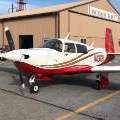Taking Mooney for a Spin (poll)
Spinning Mooneys
192 members have voted
-
Members Online
- 201Mooniac
- GoDemonDeacons
- TCC
- PeteMc
- GeeBee
- mpess
- 1980Mooney
- Marc_B
- TravelingIA98
- Crawfish
- valientbaby
- good2eat
- kortopates
- Cfidave
- Skyland
- Thedude
- Rmfriday
- spistora
- Mooney in Oz
- atpdave
- PeytonM
- 1967 427
- IvanP
- RGDantas
- Oscar Avalle
- caractacuspdoom
- cuddlesplatter
- mluvara
- amillet
- N201MKTurbo
- Dwb62
- Blaze
- hammdo
- KLRDMD
- M20E for me


Recommended Posts